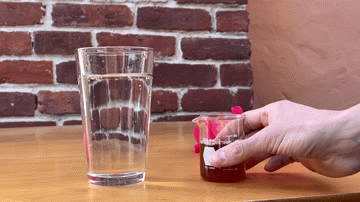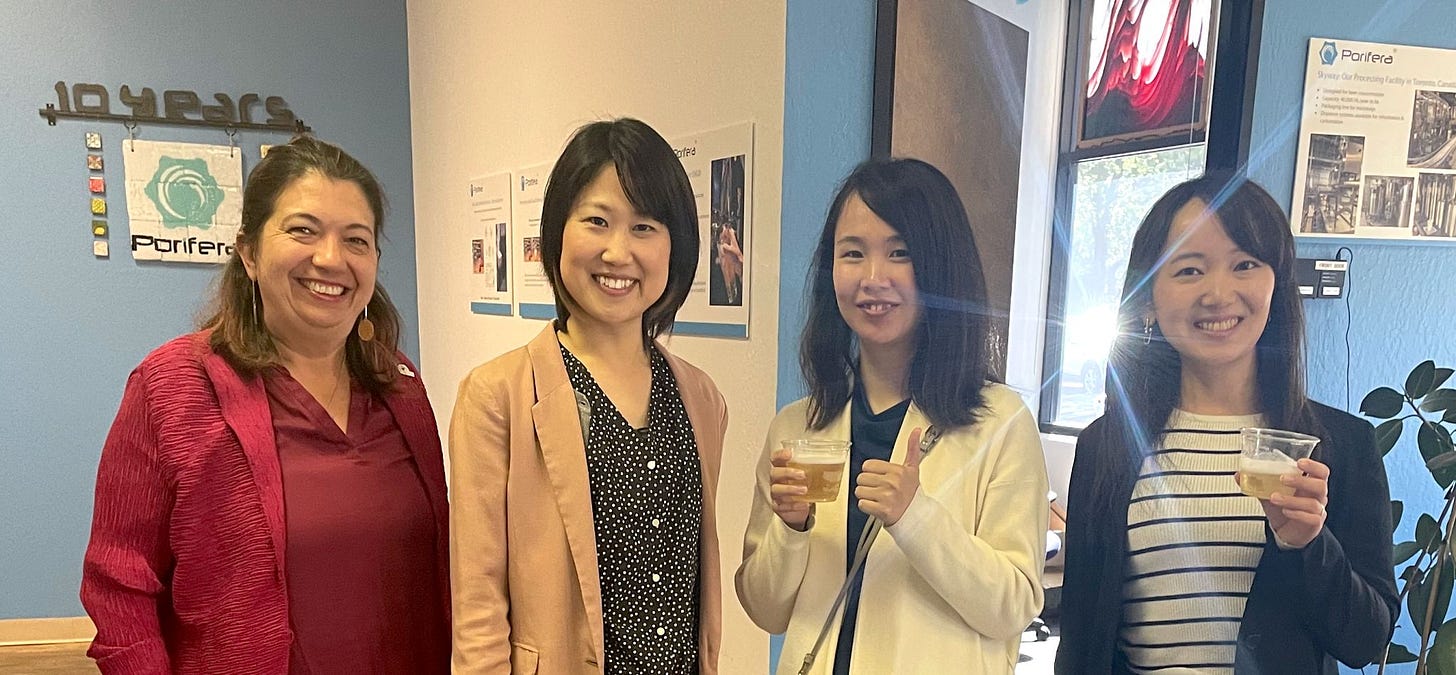💡 Investment Notes: Why we invested in Porifera
Reinventing the way we process and transport water, for planetary wellbeing
Given that most of the consumer beverages that we buy contain at least 80% water by volume, we spend a lot to ship water around the world. Just think of your favourite juices, teas, sodas, and beers - how many thousands of miles do they have to travel before they reach you? If we could shrink the world’s beverages, we’d be able to decrease their transportation footprints significantly.
But of course, the process of producing concentrates in itself requires significant energy: Freeze concentrators can preserve the taste of the liquids they concentrate, but they are high cost and energy intensive to facilitate the process at sub-zero temperatures; conversely, product concentration with thermal technologies, such as evaporators, have high energy demands to boil the water off. Evaporation-based concentrates have also fallen out of favour with health-conscious consumers, as evaporation also degrades the quality and nutritional value of its products.
Enter Porifera. With its proprietary membrane technology, Porifera addresses all of these issues.
Here are three reasons why we invested.
Pictured above: Photos from Porifera’s semi-automated membrane assembly lines, as well as an early 25,000 sq ft demonstration facility
1. Stand out technology, validated from customer feedback and demand
Porifera uses its technology to create tailored systems for its customers, harnessing innovations in forward and reverse osmosis to produce concentrated products with no degradation of flavour or nutritional content - all with a lower environmental footprint than traditional methods. In fact, a panel study at USDA Research Laboratory showed:
No significant difference in flavour between fresh and Porifera’s reconstituted juice
Significant improvement over conventional concentrates
>99% retention of antioxidants, dietary fibre and other essential components like citrulline.
The company has also completed numerous pilots with large corporate customers across product categories, including Molson Coors and leading global coffee companies. We spoke to 5 customers who had tested competing technologies, and across the board they validated that Porifera’s stood out amongst the crowd when it came to flavour, colour, shelf stability, and cost savings. In one 20-year project, they are expected to generate $95.5M in cost savings per year. As different beverage segments feel the burn of logistics costs and the implementation of sustainability policies, demand for Porifera’s solution has grown, with 50% of projected sales booked before 2024 had even begun.
Pictured above: Rehydration of Porifera’s Ultra High Gravity Beer to produce a fresh pint of beer - a product which is notoriously hard to concentrate
In particular, Porifera’s technology stands out for its ability to concentrate beers (and high quality de-alcoholized beers and wines), where alternative processing technologies have failed. With a 8,000 sqft facilitaty in Toronto, Canada for beer concentration, they’ve been able to demonstrate their ability to operationalise their systems successfully in this market (In the Molson Coors example above, for example, over 15,000 consumers have already been served the Porifera-produced drinks in 50 bars and restaurants.)
2. Team Expertise
Dr. Olgica Bakajin, the company’s CEO, brings serious scientific credentials to the table: Having received her Ph.D. in Physics from Princeton University, she is named an inventor on more than 20 patent families, and has a proven track record of delivering innovative solutions that address some of the most pressing challenges facing our world today. Her scientific works, including peer-reviewed publications in Nature and Science, have been cited more than 20,000 times.
Pictured above: Dr. Bakajin hosting visitors from Suntory, Japan
Dr. Bakajin’s technical expertise is matched by the commercial know-how of COO Scott Cooper. Scott brings 15 years of C-Suite leadership into the company, having led both private and public companies with full P&L accountability of a large $2B business, as well as a leading start-up breaking new ground.
3. Environmental impact on both emissions and water use
Based on numbers from pilot tests at Porifera’s facilities, if implemented for 95% of all the orange juice produced in the world (orange juice being one of Porifera’s biggest initial markets), the CO2 reductions would amount to approximately 2,860,000 MtCO2e/year in just one single customer segment. If we scale that across its other applications, the potential for impact in just emissions is astronomical.
Importantly, Porifera’s technology also draws fresh water, allowing for water reuse. In the 20-year project mentioned in the previous point, 5 billion gallons of water is expected to be regenerated for reuse. With global water scarcity issues looming, it is crucial that industry finds ways to manage its water supplies and impact on the water table carefully. Porifera’s technology is positioned to help it do exactly that, with a project in the works to deliver a 400 gallon per minute water reuse system for Procter & Gamble.
Operating within a beverage market that is poised to reach US$235.70B in 2024, we believe that Porifera is on near the tipping point of driving huge gains in efficiency and sustainability across the industry. Read more about our investment earlier this year on e27.
Thanks for reading! Interested to learn more? Read more about Porifera at their website and Linkedin.
And if you enjoyed these notes, please consider sharing it with your network and subscribing for future updates!






